Syzygium: characteristics, varieties and features of care
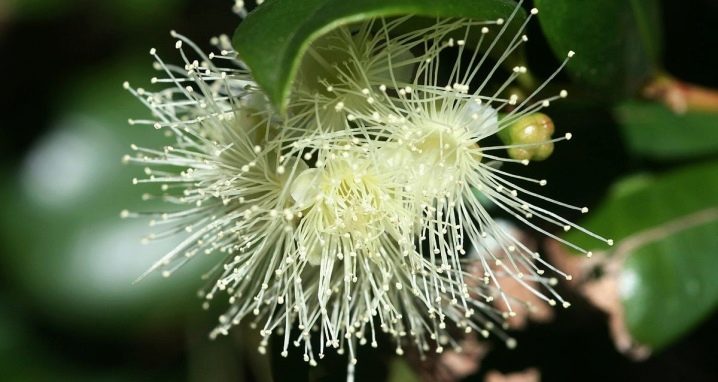
Syzygium is a prominent representative of the Myrthas, which "lives" in the tropics. This plant has chosen for itself the Eastern Hemisphere, Australia, India, Madagascar, Malaysia are most suitable for it in terms of climate. Everything about this plant is unusual: shape, leaves and even fruits. Despite its exoticism, syzygium is very popular among professionals, flower growers and ordinary lovers of home plants.
Description
Syzygium, depending on the species, can be a perennial tree or a tall shrub. Side branches grow from the bottom point, from the very base. Young stems become stiff in a short time, and a rough brown bark with a dark shade appears on them. Syzygium can grow up to 30 meters, cultivated plants grow up to 1.5 meters.
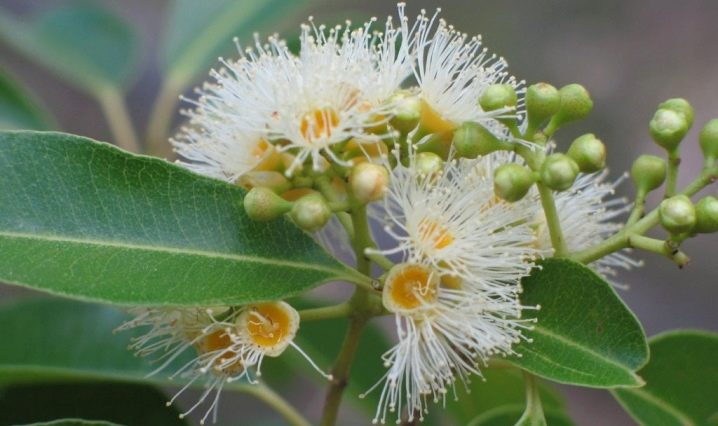
Shoots in the first year of life are colored reddish, which gives the plant a spectacular appearance.
Petiole leaves are oppositely arranged, their shape is oval or even inverted ovoid. The edge of the leaf is sharpened and smooth on the sides. The leaf plate is green, leathery, dense, a small fold runs along the central vein. The leaves grow up to 12 cm in length, and in width they usually reach 4 cm.
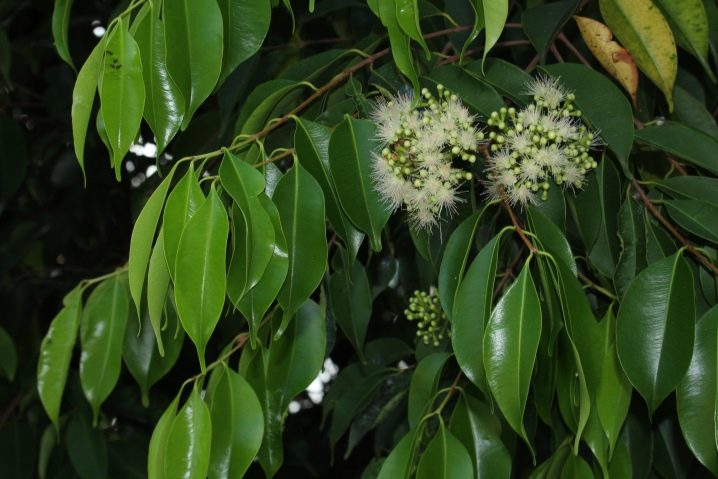
This amazing plant blooms in the summer. Flowers are collected in inflorescences in the form of umbrellas, they are quite large. Flowers can be white or cream, pink or lilac - in any case, syzygium looks spectacular during this period. The inflorescences quickly throw off the flowers, in the place of which long stamens appear. The length of each varies within 10 cm. A pleasant, strongly pronounced smell emanates from flowers and even fruits.
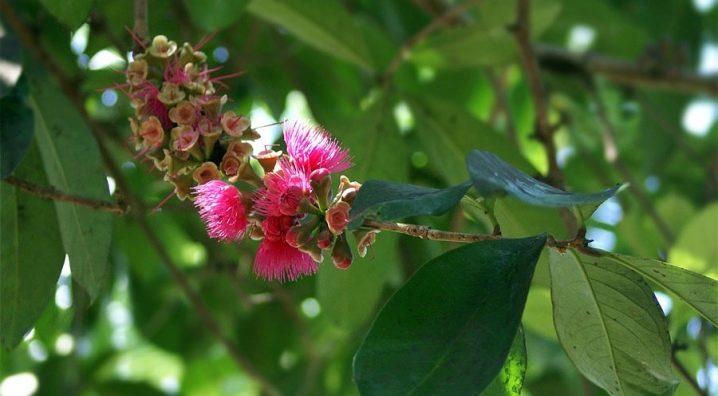
Views
There are about 50 species of this amazing tropical plant. Most of these varieties are large in size, therefore only a few of them have been domesticated.
Syzygium fragrant also called scented. This plant is the most widespread, famous and popular. It is this syzygium that is called the clove tree, since its fruits are used as a seasoning. The well-known carnation is harvested from buds that have not yet bloomed. They are collected and dried, after which they are ready to eat. They contain 25% essential oil. The height of the clove tree can be up to 12 meters. On young branches, there are glossy, tough, resilient leaves.
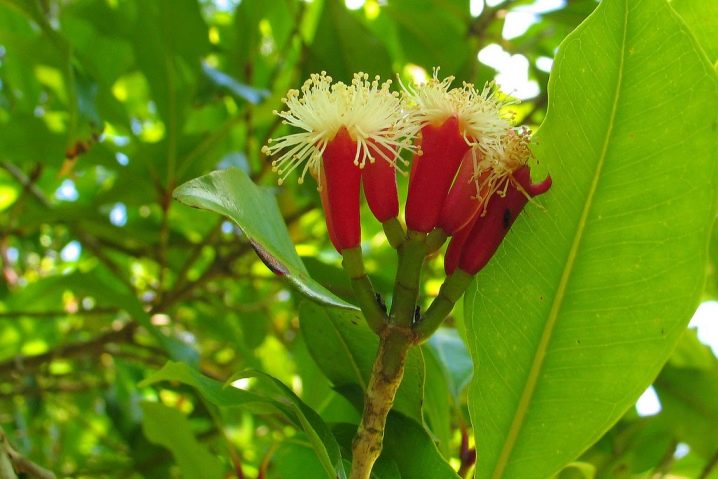
Syzygium cumin also known as caraway. These trees grow up to 25 meters in height and have a spreading crown. The tree blooms with white flowers, the diameter of which does not exceed one and a half centimeters. Small reddish fruits appear in place of flowers.
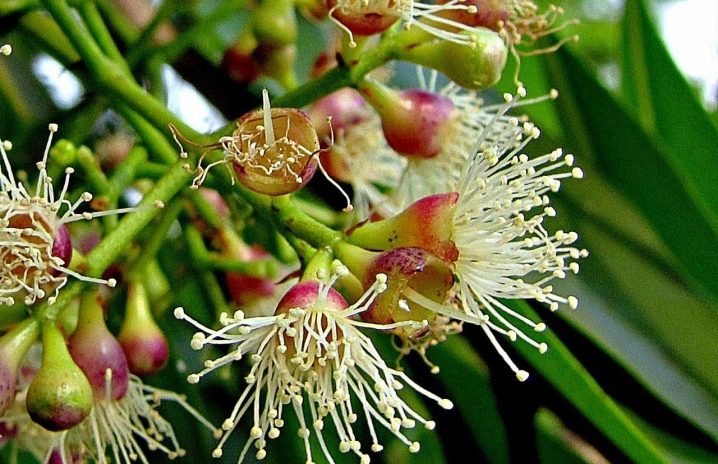
Syzygium yambosis has a small size compared to previous options: the height of the plant does not exceed 10 meters. Lanceolate leaves densely cover the branches of the plant. Almost every branch contains creamy flowers, collected in lush umbellate inflorescences. Yellowish fruits can be round or slightly elongated.
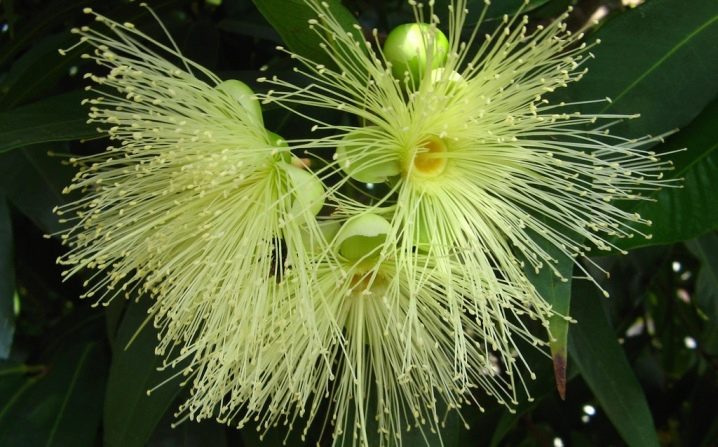
Paniculate the type of plant is often called paniculatum and "Eugenia myrtolistnaya". Such a syzygium grows in the form of a lush, spreading shrub, the maximum height of which is 15 meters. As it grows, the crust cracks and flakes off. Dark foliage densely covers the plant. On the branches (between the foliage, closer to the edge) white inflorescences are located.Soon, purple glossy fruits with a length of 2 cm will appear in their place.
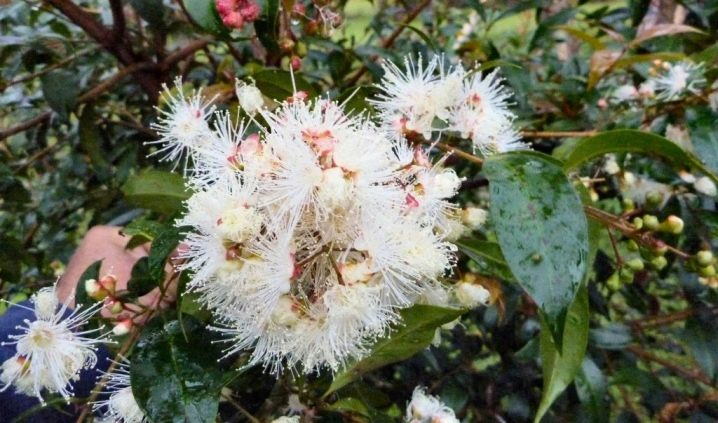
Variegated the type of syzygium is presented in the form of tall lush bushes, which stand out with unusual leaves. On the lanceolate dark leaves, white spots are located, which creates an unusual marble pattern. The pear-shaped red fruits smell like cloves and taste like cranberries.
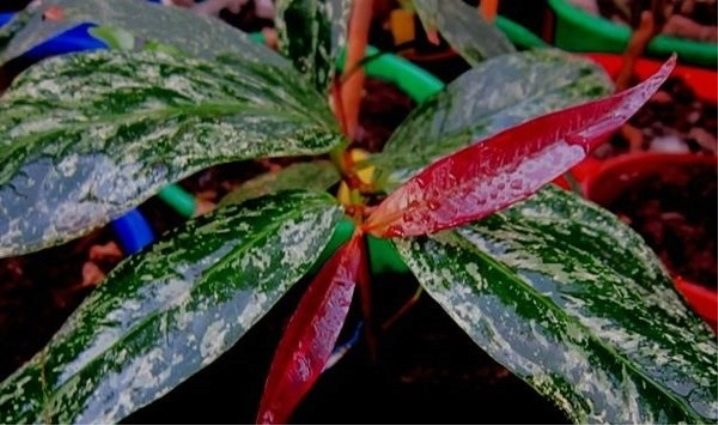
Syzygium blushing actively used as a houseplant. This variety is characterized by shoots with a red tint, on the back of each leaf there is a vein of the same color. The plant is decorated with fruits in the form of large bunches.
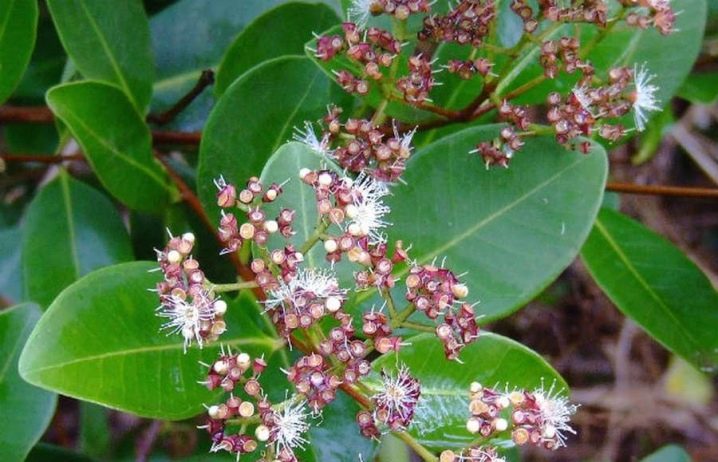
- Syzygium of Malacca also called the Malay apple. This plant has the largest fruits of all species. Trees can grow up to 25 meters, their shape is close to a cone.

Reproduction
The plant reproduces in several ways.
The plant reproduces by seeds very successfully. Ripe and healthy seeds are sown in January. First, they must be cleaned of pulp, dried and soaked in a solution of potassium permanganate. For planting seeds, a mixture of leaf and turf soil with sand is used. The seeds are deepened by a maximum of 2 cm, watered and covered with foil. The container is located in a bright place with a temperature of + 26 ... +28 degrees. Seedlings appear after 28 days. The sprouts are dived after the appearance of two leaves. The transplanted sprouts are kept at a temperature of +18. After the fourth leaf, the sprout is pinched, which will trigger the development of lateral shoots and provide the syzygium with a beautiful shape.
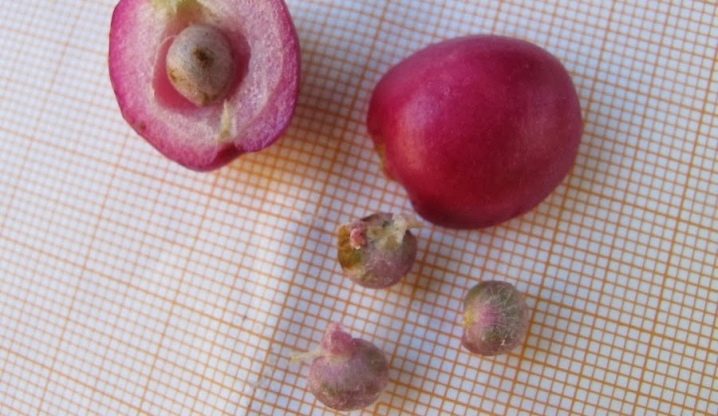
A tropical plant also reproduces by cuttings. For this method, you need branches that have just begun to grow rustic. The optimum length of the cuttings varies between 10-15 cm. The lower side is treated with Kornevin solution, and they are planted in garden soil with a depth of 4 cm. Until the roots appear, the cuttings should be kept in a bright and warm room. After a month and a half, the cuttings can be transplanted.
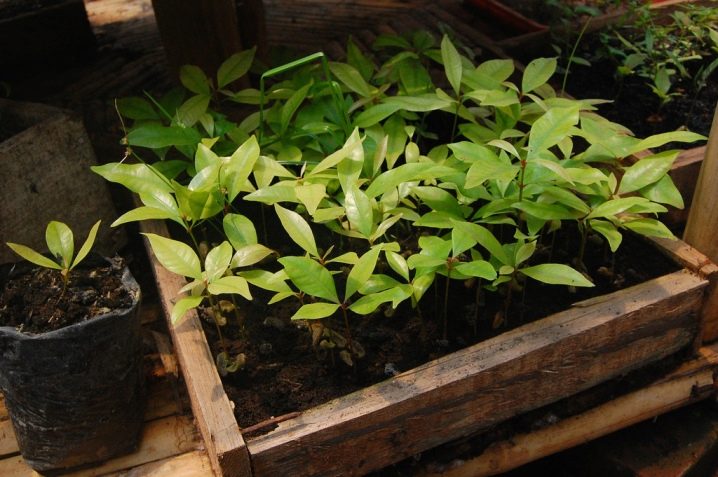
Propagation by air layers is the easiest way. The essence of this method is to tilt the shoot to the ground and fix it in this position. It will take several weeks for independent roots to appear on the shoot. In this case, the branch can be cut and the rooted cut can be transplanted.
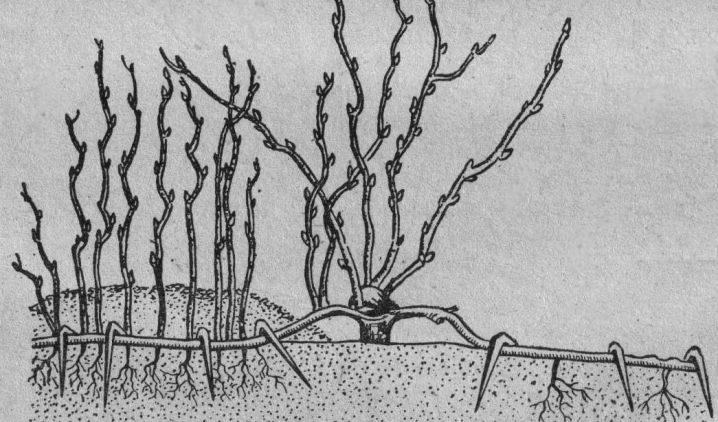
Transfer
The growth of the root mass in syzygium is moderate. Therefore, the transplant can be carried out once every 1-3 years, as the plant grows. It is difficult to replant large specimens, and there is no need for this. It will be enough to replace the topsoil with a fresh one. Syzygium does not like high acidity in soils. You can buy a ready-made substrate or make your own soil. To implement the last option, you will need to prepare the following components:
- peat;
- humus from leaves;
- river sand;
- sheet soil.


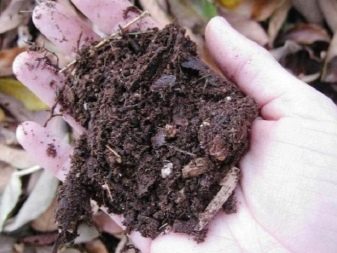
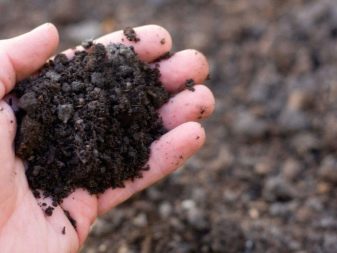
The bottom of the container must be filled with large drainage material that has been disinfected. Further landing is carried out according to the standard scheme.
Care rules
Syzygium is definitely not capricious, although it is considered an overseas guest from the tropical forests.
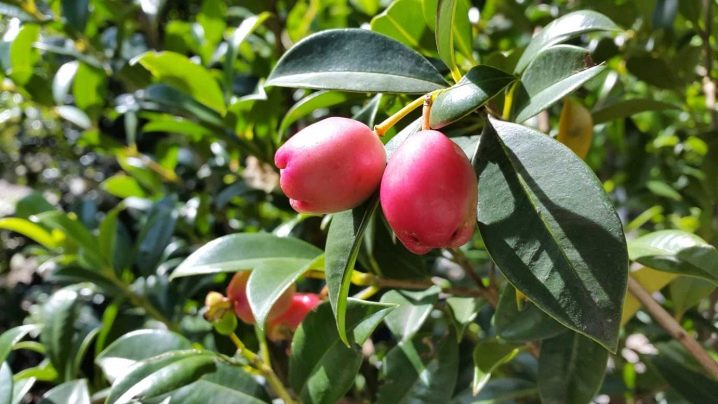
The main requirements for its content are set out below:
the place for placing the plant should be as light as possible;
protection from direct sun is required;
daylight hours should be at least 12 hours, and better - 14, therefore, an additional light source is required in winter;
for summer, the optimum temperature is in the range of + 18 ... +25 degrees, for winter maintenance, the temperature drops to +15 degrees;
for irrigation, warm, settled water with low hardness is needed;
watering should be frequent, not abundant;
the plant responds well to spraying and outdoor shower, such procedures are relevant only in the summer;
feeding is carried out in March and September, you need to use mineral complexes;
pruning is required;
in rare cases, it is required to treat plants from pests with preparations of an insecticidal group.
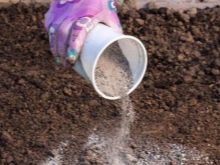
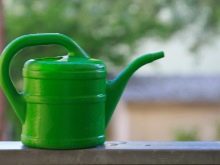
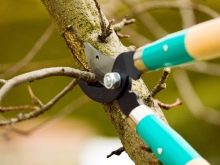
For advice on caring for myrtle, see the video below.



































































Thanks!
The comment was sent successfully.